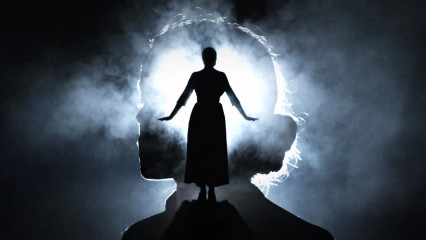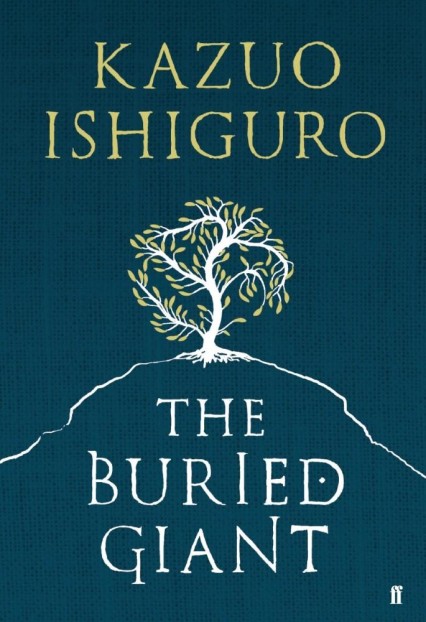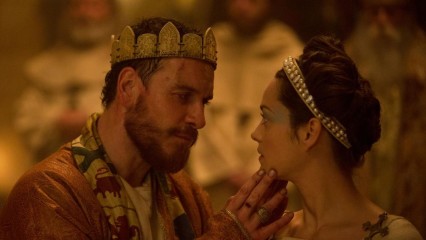In Part Two of our cultural highlights of 2015, we sing the praises of another wide array of creative achievements, taking in jazz, myth, classic American literature, Ibsen and more…
Othniel Smith
If we leave aside the contrastingly dreamlike experiences of seeing both Burt Bacharach and The Fall in concert; Pixar’s ridiculously clever Inside Out; Chalkie Davies’ exhibition of New Wave era rock photography at the National Museum Of Wales; and day-trips to London to see Farquhar’s The Beaux’ Stratagem at the R.N.T. (a restoration comedy which was actually funny) and Gary Owen’s Violence And Son at the Royal Court (his Iphigenia In Splott was similarly bruising), my artistic highlight of the year has to be Henrik Ibsen’s A Doll’s House at Sherman Cymru.
 As is well known, Rachel O’Riordan found herself plunged into a financial nightmare when she took over at the Sherman early in 2014. This has led, regrettably, to redundancies, and the unfortunate circumstance of a once-busy building being dark far too often, the days where main house and studio space simultaneously hosted productions seemingly in the past.
As is well known, Rachel O’Riordan found herself plunged into a financial nightmare when she took over at the Sherman early in 2014. This has led, regrettably, to redundancies, and the unfortunate circumstance of a once-busy building being dark far too often, the days where main house and studio space simultaneously hosted productions seemingly in the past.
O’Riordan has made a virtue of the struggle to fill the main auditorium by aiming to put her directorial stamp on canonical, curriculum-friendly texts, her first production having been a self-consciously “yoof”-styled Romeo and Juliet. Her approach to Ibsen was somewhat more traditional, with Kenny Miller’s “bird in a gilded cage” set the only overtly symbolic element which was evident as the house-lights went down.
As better-educated readers than myself will know, the play’s heroine is Nora Helmer, its theme being the disintegration of her apparently happy marriage to Torvald, a kindly pillar of bourgeois society. Leila Crerar’s performance was a controversial one, with her schoolgirlish giggling and quicksilver mood-swings prompting uneasy audience laughter. It was entirely appropriate, however, since the story charts Nora’s journey from flighty, clumsily manipulative woman-childishness to the beginnings of true adulthood.
Peopled with compellingly complex characters – Krogstad, the sympathetic villain; Doctor Rank, the amusing but tragic family friend; Kristine, the old acquaintance who, like Nora, is journeying towards completeness, but taking the opposite route – Ibsen’s drama (in the Simon Stephens’ translation – his touring adaptation of The Curious Incident Of The Dog In The Night-Time was another highlight of 2015) had me, somewhat unexpectedly, on the edge of my seat.
With newer, younger theatre companies understandably keen to sell their work as being of immediate political and social relevance, this was a much-needed reminder that those plays by dead white men which continue to be performed survive for reasons other than the meaty roles they provide for actors. Ibsen was writing about the need for self-actualisation at a time – the 1870s – when it was a distant dream not only for women, but for most men in most societies.
Having anticipated a drily educative evening out, I came away entranced.
Jane Oriel
In February this year, I witnessed the revival tour of Ultima Vez’s 1987 dance, What The Body Does Not Remember. Back in the 1980s, this creation built more of gut feeling and instinct than codified steps and order, blew the minds of most critics and deeply unsettled the regular European dance fan. I wondered if this long ago debut from the choreographer Wim Vandekeybus might have lost some of its impact by now.
Not one bit of it. React! React now as chalk blocks are thrown to strike. Catch, dive, roll or even steal them but run, run, run!
 An almost unbroken eighty-five minutes, formed of five word-defined sections, this segment called Stones was the headline grabber but it was not just about running, throwing or catching the hurled blocks. A microcosm of societal urges unfolded as individuals attempted to build, create and traverse, as well as rest, steal, horde and behave just as any society does through spasms of selfishness balanced against the greater good of the common weal. The rush of contrasting but empathetic feelings engendered was exhausting for us static witnesses. Equally, the thrill and fear of vicariously letting go completely was also key.
An almost unbroken eighty-five minutes, formed of five word-defined sections, this segment called Stones was the headline grabber but it was not just about running, throwing or catching the hurled blocks. A microcosm of societal urges unfolded as individuals attempted to build, create and traverse, as well as rest, steal, horde and behave just as any society does through spasms of selfishness balanced against the greater good of the common weal. The rush of contrasting but empathetic feelings engendered was exhausting for us static witnesses. Equally, the thrill and fear of vicariously letting go completely was also key.
Of the other compelling sections, it was the one referred to as Frisking that moved me the most. Three females with male counterparts played a sequence of unique pas-de-deux. The women in army-style shirts stood as Leonardo da Vinci’s Vitruvian Man as the men frisked them, one on one, running hands functionally at first over and under limbs but with increasing invasiveness. This became a freshly hewn tango of urgency and attraction with growing lust as the women escaped, to then agree terms but not as captives. I remain impressed that the female motif did not adhere to the age old seduction imperative, despite playing at a disadvantage in the game. Expressed in touch, nuzzle and the occasional deft cuatro leg flick, mutual attraction, permission and foreplay left me breathless. No man won the day but she was her own, with which to give and gain.
Music is the prime metalogical language, so this non-dance, hyper-physicality is a natural sister. To have a relationship with it, to in effect get anything out of it other than a surface appreciation for the performers’ gymnastic prowess, it must be felt more than analysed. Twenty-seven years on, modern life continues to drive us further from our primitive survival skills when our life might have depended on making moment to moment judgements. Ultima Vez shows that What The Body Does Not Remember not only remains relevant, but as a prompt for keeping our wits honed, it is very much needed.
Nicola Ann Roberts
Even an enthusiast would be understandably nervous about Kazuo Ishiguro’s first book for ten years, but he has never yet set himself a creative challenge and failed. From the masterful historical novel The Remains of the Day to the disarming dystopia Never Let Me Go, Ishiguro consistently proves himself to be one of the greatest and, in many ways, most versatile of living writers.
 The Buried Giant is a fantasy, there’s no escaping that fact. Set in a mythic England filled with ogres, pixies and dragons, it tells of the troubled peace between the Britons and the Saxons, based on a collective forgetfulness that has manifested itself as a mist on the land. The protagonists are an old couple, Beatrice and Axl, who are on a quest to find their lost and nearly forgotten son. On their travels, they meet an elderly Sir Gawain, clad in ‘rusted chainmail’, and a Saxon warrior, Wistan. Both Sir Gawain, a relic from the time of Arthur, and Wiston, a representative of a new Britain, seem to be driven by the same purpose, to slay the dragon Querig, whose breath is the mist that has enveloped England, clouding memories of war and love.
The Buried Giant is a fantasy, there’s no escaping that fact. Set in a mythic England filled with ogres, pixies and dragons, it tells of the troubled peace between the Britons and the Saxons, based on a collective forgetfulness that has manifested itself as a mist on the land. The protagonists are an old couple, Beatrice and Axl, who are on a quest to find their lost and nearly forgotten son. On their travels, they meet an elderly Sir Gawain, clad in ‘rusted chainmail’, and a Saxon warrior, Wistan. Both Sir Gawain, a relic from the time of Arthur, and Wiston, a representative of a new Britain, seem to be driven by the same purpose, to slay the dragon Querig, whose breath is the mist that has enveloped England, clouding memories of war and love.
Neil Gaiman states in his review for The New York Times, that Ishiguro never writes “the same novel, or even the same type of novel, twice”. To an extent this is true, The Buried Giant is an unusual tale in a genre Ishiguro has never before attempted. But Ishiguro’s own admission, in an interview for The Paris Review in 2008, when discussing his first three novels, that he has “written the same book three times”, also rings true. The themes in his earlier novels are also prevalent in ‘The Buried Giant’, particularly the poignant acceptance of mortality that is at the heart of Never Let Me Go. The themes in his new novel are therefore familiar, but he explores these long-established ideas through a genre that is usually burdened with clichés and weighed down by archetypes, a genre so hackneyed that it would be easy to ignore Ishiguro’s reinvention of it. This reimagining of fantasy is his true achievement in The Buried Giant. The ogres are commonplace in Axl and Beatrice’s world, even the dragon and the pixies are treated with nonchalance by the Britons and the Saxons. This realism in a genre that requires, what Coleridge termed, a ‘suspension of disbelief’, is Ishiguro’s accomplishment. His restraint, narrative control and emphasis on the mundane in extraordinary circumstances are all features of his writing to be admired.
In lesser hands, the novel would have been a simplistic allegory of the necessity to forget atrocities, leaving the ‘giant’ undisturbed, in order to live in peace. But Ishiguro is not an average writer. He knits the themes of memory, loss, revenge and the ultimate human fear of mortality into a narrative that, in its refusal to remain buried, haunts the secret places of the mind.
Graham Tomlinson
In a year when the pop music documentary appeared to achieve a coming of age, it was a pop music biopic which proved to be my cultural highlight.
Love & Mercy, director Bill Pohlad’s film about the life of Brian Wilson, opened in the UK in July. When I first read about the project, I imagined legions of hardcore fans – those mostly male, mostly middle-aged obsessives who want to hear every alternate take of every instrumental track on Pet Sounds – arguing loudly amongst themselves about whether the filmmakers would get it right. The Beach Boys, and their enigmatic co-founder and leader in particular, have been subject to such scrutiny in the last 20 years that there can be few aspects of their existence which remain beyond the reach of the dedicated Wilsonite.
They really needn’t have worried. To good effect, the film uses two actors to play Brian Wilson: Paul Dano is the young songwriter, an extraordinary talent barely out of his teens conjuring up melodies to startle the most jaded of session musicians; and John Cusack is Wilson in the 1980s, adrift and confused, whose ‘care’ at the hands of psychotherapist Dr Eugene Landy (played by Paul Giamatti) is painful to watch. Dano is mesmerising. As well as possessing a credible physical resemblance to his subject, he triumphs in his portrayal of Wilson the singer and songwriter, a performance which never once slips into the clichés of the Tormented Creative Genius. The film is even-handed too in its portrayal of the other Beach Boys, Mike Love included. Who can honestly say they wouldn’t have had doubts about all that vegetable stuff Brian was proposing on Smile?
And the best supporting role? That goes to the soundtrack of course, but specifically, composer Atticus Ross’s inspired re-imagining of Beach Boys material. So much of the music is familiar, but here presented in a way that finally gives all those technological developments in cinematic sound a purpose. You’ll never have enjoyed ‘Wouldn’t It Be Nice’ so much in all your life.
Nigel Jarrett
A university pal kept a rare 78rpm disc of I Saw Stars by Django Reinhardt and the Quintette du Hot Club de France in a round, Camembert cheese box, complete with wood-shavings for protection. It was a source of private reverie and never to be played. Such preciousness has been the devilment of jazz, a music in which, among its supporters, tradition mostly trumps modernity, even when modern morphs to traditional and there’s a distinction to be made between acceptable modernity and modern that’s considered to be off its chump. So, imagine my delight when, at the Abergavenny Jazz Festival, a Swindon lad called Ben Cipolla and his band delivered a set in which the boundaries between past and present – even the past and present of ‘pop’ – were so diffuse as to be of no account. What we got was music above which the jazz compass oscillated uncertainly, forcing us to elasticate the boundaries of art instead of insisting that they’re rigid and intended to keep out what doesn’t conform.
Cipolla, dressed in a 1940s powder-blue ‘tux’, thus illustrated a proposition applicable to all art forms struggling to accommodate the new. Language is a device enabling us to fix what is by nature molten, and where art is concerned it can create division because we are addicted to labelling: it’s what helps us make sense of the world. The trouble is that we have no way of dealing with what we’re unable to classify, and instead of extending our knowledge and experience we limit them. Not that we should force ourselves to like something we instinctively, for the moment at least, find inimical, or forfeit the right to identify the dud and the fifth-rate, for in that direction lie naked emperors and their semi-clad courtiers.
The Cipolla band wasn’t the most inspiring I’ve heard and the boys are still apprentices, maybe on course for a region I won’t be interested in visiting. But they made me think. not something I usually do at a musical event, where the feeling’s the thing. And, in thinking, my wits were sharpened. Thinking and sharpened wits came in useful at the exhibition of Canaletto and his English followers at Abbot Hall, Kendal, the other week, which showed me that art history is full of mixed messages, and that, first, the dull and uneventful are as likely to be traditional as modern (or vice versa); and that, second, the categories ‘traditional’ and ‘modern’ are themselves meaningless as the basis for value judgements.
Nuala Ní Chonchúir
The premise for Mayumi and the Sea of Happiness captivated me: 41 year old librarian has an illicit affair with a 17 year old boy on an island that is probably Martha’s Vineyard. I love both Nabokov’s Lolita and Zoë Heller’s Notes on a Scandal, so I was interested to see how author Jennifer Tseng would handle the cross-generational relationship in this, her début novel. Tseng does it absolutely beautifully. Mayumi is an accomplished novel of obsession, aloneness, fulfilment and loss; it is also about motherhood, friendship and generosity. And best of all, it is screamingly funny much of the time.
 Mayumi has all the contrariness of any flesh and blood, peri-menopusal woman who is aching with loneliness. Tseng manages, like Nabokov, to make a sympathetic, hilarious narrator of her because she is at once self-deprecating, intelligent and contradictory. There is a gorgeous honesty to her and you can’t help but love her and follow her into the inexplicable obsession with the unnamed young man. His beauty is what draws her to him initially, and the sex scenes are delicately done, but she soon has a kind of maternal interest in his well-being and is fascinated with every aspect of his – and his mother Violet’s – life.
Mayumi has all the contrariness of any flesh and blood, peri-menopusal woman who is aching with loneliness. Tseng manages, like Nabokov, to make a sympathetic, hilarious narrator of her because she is at once self-deprecating, intelligent and contradictory. There is a gorgeous honesty to her and you can’t help but love her and follow her into the inexplicable obsession with the unnamed young man. His beauty is what draws her to him initially, and the sex scenes are delicately done, but she soon has a kind of maternal interest in his well-being and is fascinated with every aspect of his – and his mother Violet’s – life.
Mayumi is a woman ‘distracted by ideas’, as the young man points out. She is also slightly unhinged by lust. The balance for her is keeping the affair secret while living with her neglectful, gnome-carving husband and being a good mother to her daughter Maria. The mother-daughter relationship is delightful, their mutual love sings from the pages.
All of this is woven through with literary references galore – Melville, Shakespeare, Nabokov – as well as lush descriptions of the food the lovers share in their secret woodland cottage: orange-infused chocolate, bundt cake, pork ramen (Mayumi is part Japanese). The life of the library and the island both loom large and add richness and depth to Mayumi’s comings and goings. Water, sand, woods, snow, heat, cold – everything is sensually and wonderfully described. The book did feel a tad long to me but it’s beautifully written and the dénouement is perfect. If you like your narrators wordy, nerdy, funny and lovable, and your sex scenes uncompromising, this is the book for you.
Matthew Mathias
Matthew sounds so bland as a name. I prefer my nickname Ferg, although what the names actually mean are so much better. The former means ‘Gift of God’, the latter ‘Rock’ or ‘Man strength’. I am lobbying the office to call me Man Strength from here on in. One of my friends said that my tribal name would be ‘shouts down phone’ although I think I would call myself ‘comes to things late’. Why? Well I saw a production of John Steinbeck’s Of Mice and Men last night and I was pissed off with myself that I hadn’t read it. So late to this was I, I had actually told people that I was going to see Death of a Salesman because I wasn’t listening to Mrs Mathias and because there are so many ‘classics’ out there that I haven’t read or seen.
As part of National Theatre live, the production that had taken place in New York was beamed direct to my face at the Riverfront in Newport. I came to it blind, not an inkling of character or plot and it was better for it. I had no other Lennys or Georges, acted or in my head, to compare with. They were played by Chris O’Dowd and James Franco respectively. I am sure big names playing big parts can be a distraction, people going to see them play a part rather than see the part itself. I thought their performances were mesmerising, especially O’Dowd’s. Playing Lenny could be easy to ham up but I found myself drawn to him even when focus was elsewhere. Every cast member (especially the limping dog) added to the experience and it only took me a minute or so to shake off the fact that the character Candy was played by Jim Norton who you may remember as ‘you address me as Bishop you little bollocks’ Brennan in Father Ted. I loved it, although bleak it talked about the need for company and the need to communicate and the need for hope. There always has to be hope.
Afterwards when I mentioned on social media what I’d been to see, it seemed that everybody in the world except me knew and had read the bloody thing. Just like The West Wing, coffee and the umbrella, old ‘comes to things late’ had struck again.
This was a highlight, but not the highlight of 2015 – that was Secret Cinema but come on we all know what’s coming in December. If done in the right way, Star Wars: The Force Awakens could be the Arts highlight of decade… well for me anyway. No pressure….
Adam Somerset
The authors of The Blunders of our Governments are heavyweights. Sir Ivor Crewe is Master of University College, Oxford. Anthony King is Professor of British Government at Essex, a television regular at election time, his contributions supplying depth of knowledge and acuity of observation over spur-of-the-moment wishful thinking. Their joint book appeared in 2013, a book where the reviews prompted “I-really-ought-to read-that” thoughts. Happily, in 2015, the Oxfam bookshop a skip from Cardiff Central Station provided a mint-condition hardback for three quid.
The media does politics but not government. The reason is simple. The Parliament Channel shows government as it is – gradual, methodical, prosaic, sweet-tempered on the whole, and unexciting for those not involved. But to watch the Select Committees at work – in late November hours of Uber UK’s top public affairs staffer, for instance, giving evidence to the digital economy committee – is always illuminating. But then, as the authors point out, the select committees cannot look into policy formulation.
The authors also point out that government does many things right. The eight hundred billion pound plus Goliath that is HM Government rarely tops the stinkers and the writedowns that the private sector has achieved. But the blunders are regular, going from the small to the titanic. The Dangerous Dogs Act is a classic of badly written rush-to-law legislation. The Housing Information Pack cost a lot of people hundreds of pounds and achieved the opposite of its intention.
The monster of the century has to be the NHS database, kicked off by the Premier’s over-riding all government process with his “yeah, sounds good” from the sofa. The bill nudges close to £20bn – that is £20,000,000,000 in real digits. But the worst are those acts of unintended cruelty that government inflicts upon those whose lives are already hard-stressed. The Child Support Agency was riddled with error and of no benefit to the recipients as in most cases the Treasury took the money. Worst of all was the risk of violence faced by women from men if they supplied the information demanded of them.
King and Crewe run through the causes mercilessly. They admit an occasional dry humour when they liken the organisational structure behind the Millennium Dome to a QR Code. Otherwise, the outsourcers are up to their necks in the mire. The Individual Learning Accounts gifted £100m to fraudsters. As for the adored PFI – let the next generation pay – Joint Ventures are unstable and long-term contracts inflexible. The faith in the cybersphere is limitless and the seduction of IT gigantism irresistible. The errors and accidental cruelties have nothing to do with Party.
The two authors, political authorities of the first order, are not system theorists. A first principle of system design is that the inner complexity of a system must be of equivalence to the complexity of the external environment. An all-Internet, stripped-of-people HRMC without simplification of the variation-riddled tax code is another IT fantasy and another disaster-in-waiting. As ever it is the most vulnerable who may await the most cruel treatment.
Hayley Long
As a former English teacher, it’s probably fair to say that I have a close relationship with Shakespeare’s Macbeth. I can recite the entire play without reading a script and I’ve seen Roman Polanski’s 1971 film adaptation so many times I sometimes wonder whether I might even have directed it myself. So, unsurprisingly, I was excited when October arrived and brought with it the cinema release of a brand new big screen Macbeth; this time directed by Justin Kurzel and starring Michael Fassbender in the title role with Marian Cotillard as his evil queen. Or more accurately, I should say that mostly I was excited but a small part of me was also cynical and anxious. I love the play too much to take disappointment well. Polanski’s version still holds up, I thought. Can this really be any better? Do we need this? The quick answer is, yes.
 From the opening seconds of Kurzel’s film, it becomes clear that he is about to offer us something different. Instead of witches, the screen shows the Celtic burial of a child and two distraught, yet silent, parents. No counterfeit new lines are mixed with Shakespeare’s and, of course, they don’t need to be. The visual effect is stunning and it is everything. It is clear that what will follow is not merely a story of greed and murder but also a more subtle and ever more powerful tale of trauma, bereavement and the desperate search for purpose which can ensue when human beings contemplate their mortality and the unsettling finality of a broken family tree.
From the opening seconds of Kurzel’s film, it becomes clear that he is about to offer us something different. Instead of witches, the screen shows the Celtic burial of a child and two distraught, yet silent, parents. No counterfeit new lines are mixed with Shakespeare’s and, of course, they don’t need to be. The visual effect is stunning and it is everything. It is clear that what will follow is not merely a story of greed and murder but also a more subtle and ever more powerful tale of trauma, bereavement and the desperate search for purpose which can ensue when human beings contemplate their mortality and the unsettling finality of a broken family tree.
For one hundred and thirteen minutes, the film sustains an attack on the senses. The Scottish landscape is beautiful and, at the same time, utterly bleak. The battle scenes are so brutal and inglorious that they have a horrifying ring of truth about them. Macbeth and his wife are clearly lost and desperate and searching for a meaning to their lives, while all the time drifting further and further apart. Extraneous characters and lines are ripped from the play and new light is shed on everything which remains. Following a truly horrific scene depicting the massacre at Macduff’s castle, nothing can now make clearer sense or sound more sane than when Lady Macbeth, dejected, tired of life and so very alone, asks, ‘The Thane of Fife had a wife; where is she now?’
Kurzel’s interpretation of Macbeth is a revelation. For me, anyway, it achieved something extraordinary. After years of freaking out schoolkids with my enthusiastic performances of literature’s most villainous female, this new film achieved the unthinkable. It made me sit in a cinema and cry tears of real pity for Lady Macbeth.
For Part One of our 2015 Highlights selections click here













